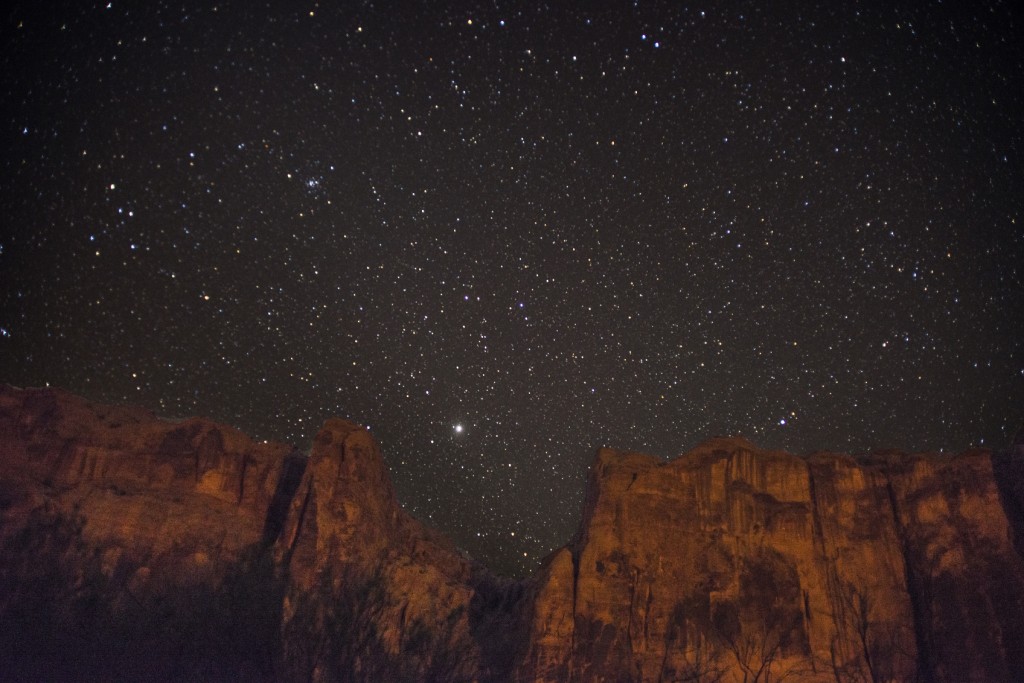5 Best Places to Stargaze
There are few experiences more deeply gratifying than seeing the beauty and vastness of the universe stretch out above you. Unfortunately, thanks to the urban and suburban sprawl of the last hundred years and the light pollution that comes with it, the majority of us living in and around large cities see see only about one-thirtieth of the stars visible in more remote locations. If you're looking to get out of the city and enjoy the night sky in all its glory, here are 5 incredible places to go stargazing.
NATURAL BRIDGES NATIONAL MONUMENT, UTAH
Before sharing the distinction with Cherry Springs, Natural Bridges National Monument in Utah was the first place in the world to be designated an International Dark Sky Park. Since receiving the honor, the park's administration has gone even further to make the site an even better destination for stargazing by modifying 4 out of every 5 light fixtures in the park to minimize light pollution. Thanks to the park's recent efforts and its remote location, Natural Bridge National Monument is one of the darkest locations in the United States.
A hike of moderate difficulty through the park will allow you to see the breathtaking contrast between the night sky's dazzling brightness and the darkness of the canyon walls along the horizon. Additionally, the site holds ranger-led astronomy programs twice-weekly during the summer that feature advanced equipment to help stargazers get an even better look at the already unparalleled views available at Natural Bridges National Monument.
MAUNA KEA, HAWAII

Home to one of the world's most famed astronomical observatories, Mauna Kea on the Big Island is the world's tallest mountain measured base to peak, though much of this height is underwater. The same high altitude, clean air, and remote location--in addition to weather patterns that make the location one of the least cloudy places on earth-- that make the site ideal for the scientific pursuits performed in the Mauna Kea Observatory make the peak a great destination for naked-eye stargazing.
Summertime visitors to Mauna Kea have the option of hiking to the summit, though the 10-hour round trip reaches an altitude of nearly 14,000 feet above sea level and is recommended only for experienced hikers. Guided stargazing tours are also available on Mauna Kea, providing dinner, nighttime viewing from the mountain's summit, information about the site's cultural importance and history, and even warmed parkas for those who find the night air a bit too chilly.
BIG PINE KEY, FLORIDA
Big Pine Key is located about 100 miles from the bright city lights of Miami, but this Island just off the southern coast of Florida feels like a whole other world. The northernmost part of the the island is home to the National Key Deer Refuge, and the entire island has strict restrictions on the use of artificial light during much of the year. While these light pollution rules are in place to allow the enormous sea turtles that lay their eggs on the island's beaches to do so safely, they also make the island a prime destination for stargazing.
With the island's stable weather patterns and strict restrictions on human-generated light after dark, Big Pine Key has the distinction of being one of a very short list of locations in the United States where the Southern Cross constellation is visible to the naked eye.
CHERRY SPRINGS STATE PARK, PENNSYLVANIA

Surrounded by 262,000 acres of state forest, the astronomy field at Cherry Springs State Park is well-known as one of the darkest locations on the east coast, and was the second location designated as an International Dark Sky Park. All of the lighting in the 82-acre park is shielded, and all previously-installed white lighting has been converted to red. Also, in addition to the protection offered by the undeveloped land that surrounds it, all of the towns surrounding the 2,300-foot mountain on which the field is located sit in valleys, preventing the light that they generate from reaching the field. On the clearest and darkest nights at Cherry Springs, the light generated by the Milky Way is bright enough to cast noticeable shadows.
In addition to its remarkable darkness, Cherry Springs Park's Astronomy field is exceptionally easy to access. Route 44 carves a path through the middle of the park, allowing visitors to drive right up to the astronomy field. To combat any potential issues resulting from automobile headlights, the field features berms maintain its trademark darkness, as well as three observation domes that are available for rent.
BORREGO SPRINGS, CALIFORNIA
Borrego Springs, California is a truly unique community in Southern California. The only municipality in the United States totally surrounded by state park lands, Borrego Springs? location within the 600,000-acre Anza-Borrego Desert State Park gives means that light pollution from surrounding communities is almost nonexistent within its city limits. The small community has capitalized on the resulting potential for stargazing by minimizing nighttime light sources, even using stop signs exclusively on Borrego Springs? roads to eliminate the light pollution of stop lights.
Thanks to both the beauty of its night skies and the warm Southern California climate, Borrego Springs enjoys a healthy tourism industry. In addition to several lodging options for visiting stargazers, the community has a variety of businesses offering daytime activities including four golf courses, a tennis center, and horseback rides, not to mention all of the great hiking available just beyond the city's border in the Anza-Borrego Desert State Park.
Even though light pollution keeps most of us from seeing much of what the night sky has to offer, there are still a few places you can go to see the beauty of the night sky without interference from light pollution. If it's been too long since you've seen the night sky in all its glory, check out one of these dark destinations.